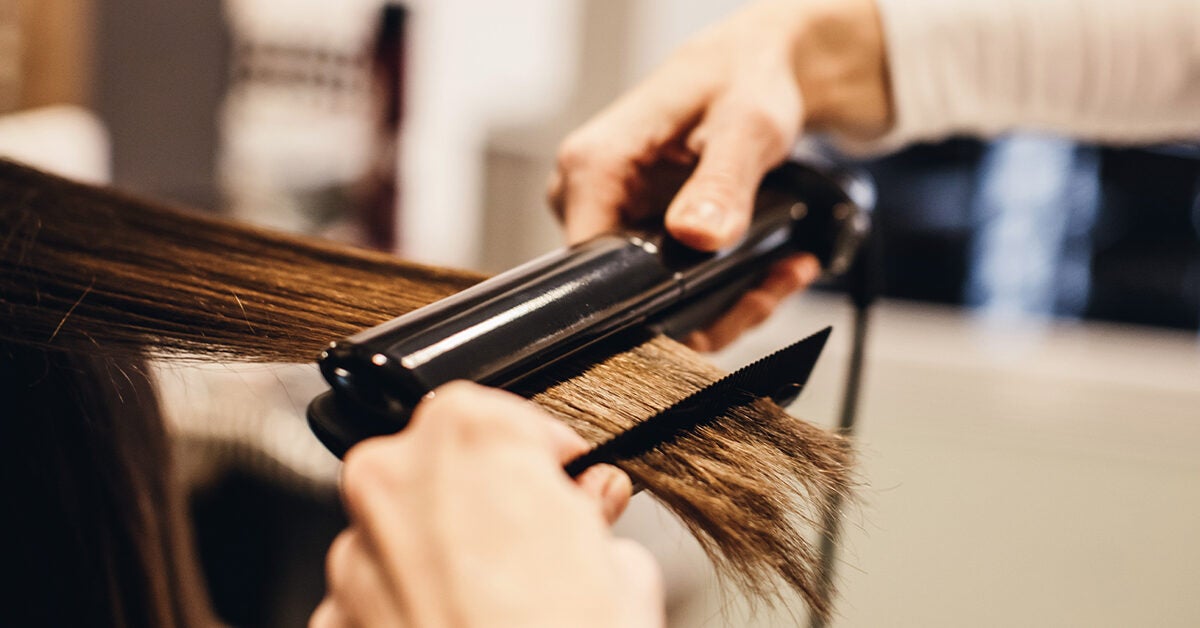
Hair rebonding is a chemical process that changes your hair’s natural texture and creates a smooth, straight style. It’s also called chemical straightening.
Hair rebonding is typically performed by a licensed cosmetologist at your local hair salon. The multistep process breaks the natural bonds that exist in your hair follicle, then rebuilds these bonds into a different shape. This changes the way that your hair looks.
Hair rebonding costs anywhere from $250 to over $1,000. The cost of the treatment will depend on which salon you choose to go to, whether you opt for nontoxic ingredients (which are often pricier), and how long and well-maintained your hair is.
Hair rebonding is a way of straightening your hair using powerful chemicals. The process takes several hours.
Basically, water breaks the hydrogen bonds of the keratin molecules in your hair. A chemical, usually formaldehyde, then crosslinks the new design of your hair structure in a pin-straight alignment.
The result is hair that looks even straighter than naturally straight hair.
The process
- First, your stylist washes your hair and lets it air-dry into your natural texture. This removes dirt and oils and also gives your stylist insight into what your natural hair texture is.
- Next, your stylist sections your hair, much like they would for a blow-dry or hair dye treatment. Every strand of your hair is then coated in a cream called a “relaxant.”
- The relaxant stays on your hair for 30 minutes or more. Because the relaxant is breaking down your hair cuticle on a cellular level, the relaxant step needs to be closely monitored so that your scalp and hair aren’t damaged.
- Your stylist then steams your hair using a special hair steaming tool. Your hair will be extremely straight at the end of this step, but you’re not done yet.
- Next, your stylist rinses your hair again and blow-dries it so it’s ready for the next part of the process.
- Keratin lotion is applied to your hair. This keratin lotion is meant to help your new hair bonds to set. A neutralizer is then layered on top of your hair to stabilize these newly formed bonds. You’ll sit with the keratin and neutralizer on your hair for about 30 minutes.
- Your hair is rinsed one last time to remove the keratin and neutralizer. Your stylist then blow-dries your hair straight in its finished style.
Hair rebonding is permanent. If you like the way it looks, you won’t have to repeat the process until your hair has an inch or two of new growth at the roots.
Hair rebonding typically uses formaldehyde or aldehyde to break apart the bonds of your hair.
Some formulas claim to be formaldehyde-free, but almost every relaxant formula releases powerful gases that are chemically similar to formaldehyde. Methylene glycol and methanal are chemicals that behave in this way.
After a hair rebonding treatment, your hair will look smooth, glossy, and straight. If you have hair that’s prone to frizz, you may notice that it’s much less frizzy.
Keep in mind that these results aren’t guaranteed. Some people who opt for hair rebonding notice that their hair still has a bit of its natural texture and don’t feel like the treatment is effective.
If your hair is thin, dry, color-treated, bleached, or heat-damaged, hair rebonding may simply damage your hair without giving you the desired result.
You should consult with your stylist about whether the treatment will work well for you before booking an appointment. A responsible stylist will probably test out a few strands of your hair to see if your hair can handle hair rebonding.
Using these powerful chemicals on your hair can lead to side effects. Hair breakage, damage, and dryness are common side effects of hair rebonding.
People who have their hair chemically straightened every 5 to 8 weeks may be more likely to develop breast cancer, according to a large 2019 study. This might be because the chemicals used have been linked to disrupting your hormones.
If reproductive cancer runs in your family, you might want to take this into consideration before making hair rebonding a part of your beauty regimen.
Rebonding is similar to but different from other hair smoothing processes, such as keratin treatments and Brazilian hair straightening. Hair smoothing processes aim to smooth down your hair cuticle, making it less frizzy and adding softness.
But hair rebonding actually breaks apart the hydrogen bonds in your hair before fusing them back together. Hair rebonding gets your hair more straight than any other process, but it also carries a high risk of hair damage.
Hair rebonding isn’t the only way to get straighter hair. Options for getting sleeker, straighter locks without chemicals include:
- at-home straightening irons
- hair wrapping
- professional salon blowouts
- hair rollers
- deep conditioning and hot oil treatments
Hair rebonding is a process that changes the texture of your hair. When it works, you’re left with hair that’s permanently sleek and even straighter than naturally straight hair.
But hair rebonding does use powerful chemicals, and there’s an exposure risk if you get the process done regularly.
Bagikan Berita Ini

















0 Response to "Hair Rebonding: What to Expect - Healthline"
Post a Comment